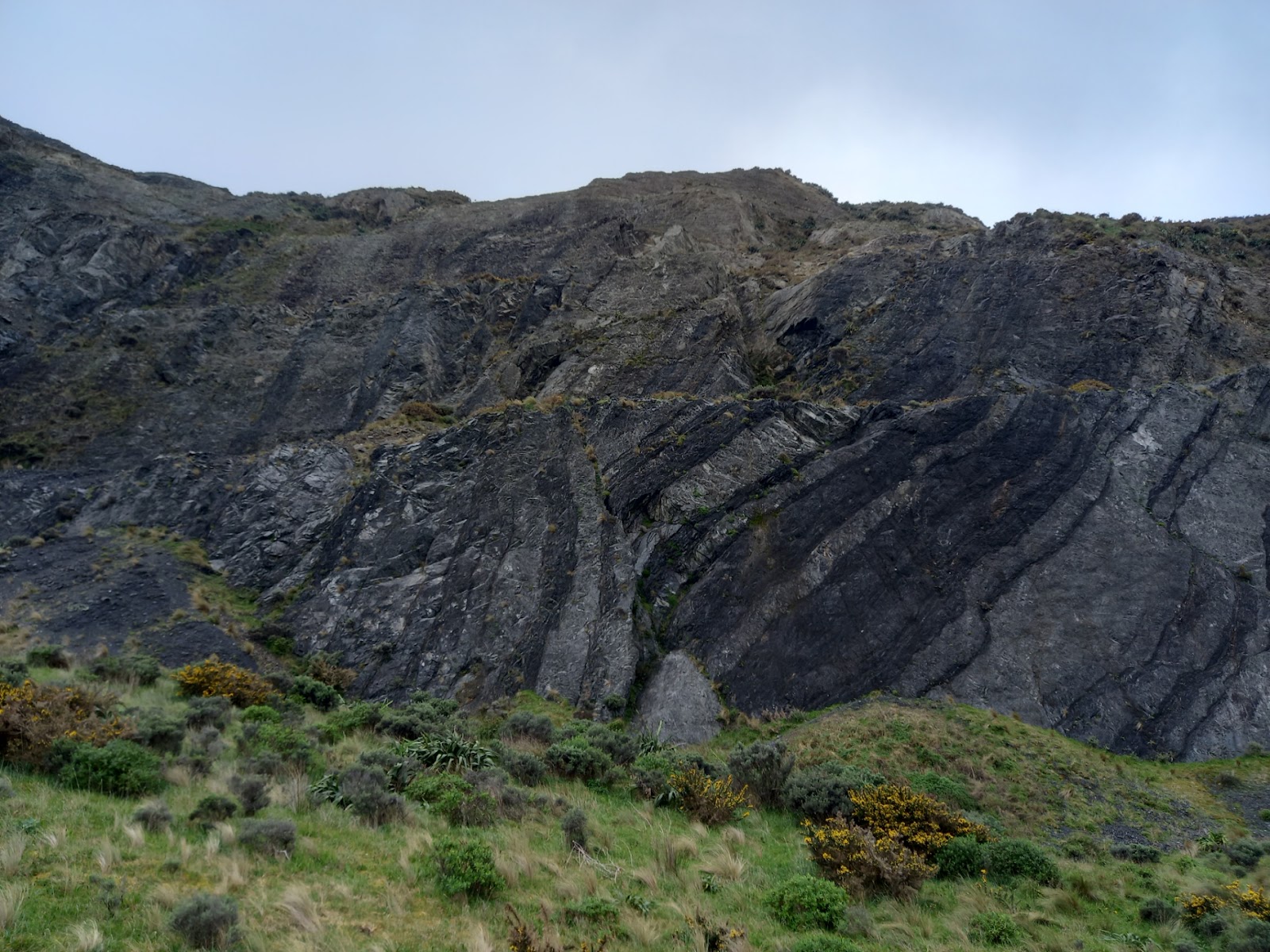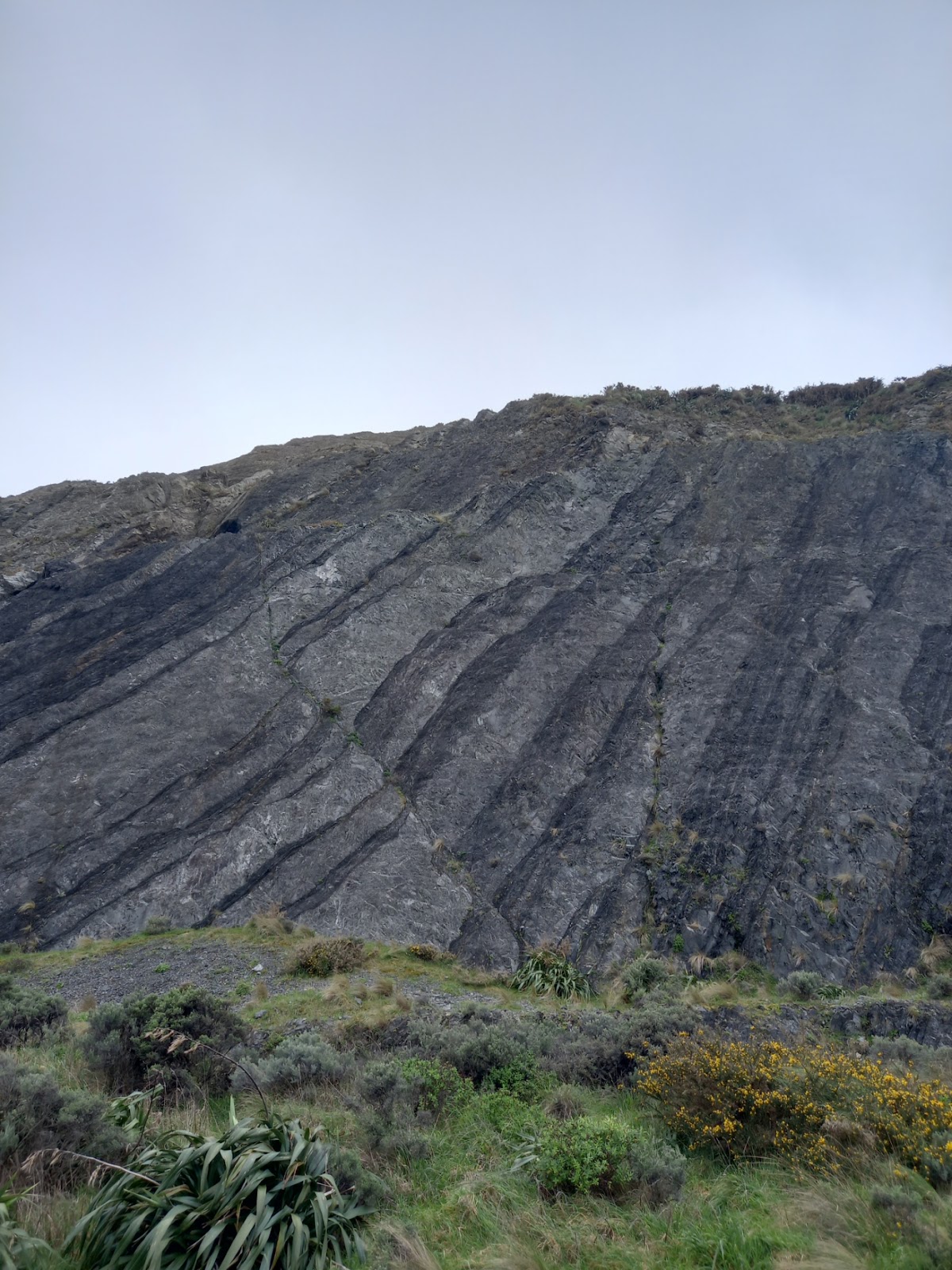As members of the Friends of Te Papa, we are often invited to participate in talks or other events arranged by FoTP as part of their fundraising efforts. Occasionally, we even accept!
This tour was to explore the geology of Wellington city, and
was led by Hamish Campbell, formerly of GNS. We were advised to bring outdoor
and waterproof clothing as we would be going outside on what turned out to be a
cold, windy, somewhat drizzly day.
We arrived at Te Papa to board our coach at 9:45, and set off around Wellington’s coast – i.e. the route we usually drive to and from Wellington! – with commentary from Hamish. He distributed maps of the city, oriented such that the edge of the map was parallel with the Wellington Fault and the whole of the harbour could be included. There was lots of stuff about faults, and subduction, and plates. The rock in the Wellington region is uniformly greywacke base rock, a type of sandstone. Our route took us around the bays and along Shelly Bay road – the first time we’d been up that way since the fire in June this year. All those lovely heritage buildings destroyed. So sad.
Our first stop was at the Wahine Memorial in Seatoun. The memorial itself is built from greywacke of various different colours – fifty shades of greywacke! The different colours reflect the fine-ness of the particles that made up the original sedimentary layer, and also the amount of carbon included – the more carbon, the darker it appears. Hamish also asked us to consider where the pebbles on the beach had come from – not the sea, as it happens, but almost exclusively delivered by man.
From here we drove along the south coast towards Red Rocks. The tarmac road runs out after passing Owhiro Bay, so from there we went on foot to admire some of the rock formations in what used to be a quarry. The fault lines are clearly visible in the rock, and the shift between the layers of strata show the subduction and bending of the rock under extremely high temperatures deep underground, which have now been brought up to the surface.
 |
| This is all your fault |
We ate our packed lunches on the coach at this point, it being generally too cold, windy and rainy to eat outside. From there we drove up to Karori, with the intention of getting up to Wright’s Hill to see the whole of the Wellington fault from the vantage point. But the weather was against us by this time, and we scratched the idea after a cup of coffee, as there would have been nothing to see under these conditions. We therefore drove on to the final stop on the tour – a church built in the 1960s, the Futuna Chapel. This is included because it contains three unusual types of stone: an altar made of red South African granite, serpentinite in the floor, and the marble used for altars around the rest of the chapel. Hamish told us about serpentinite and the difference between it and pounamu (greenstone or jade); and also about his adventures in finding pounamu, and the research which eventually led to a unique way of identifying pounamu using radio isotope dating, which is the only reliable way to positively say where a piece of stone has originated; strontium/lead decay is the method used.
That about concluded our tour, and we drove back to the city centre. They asked us where wanted to be dropped off (as the route was going past some people’s homes), so I hopefully raised my hand and said Miramar, but they weren’t going for that, and we alit at the bus station to complete our journey on the No. 24 bus.



No comments:
Post a Comment